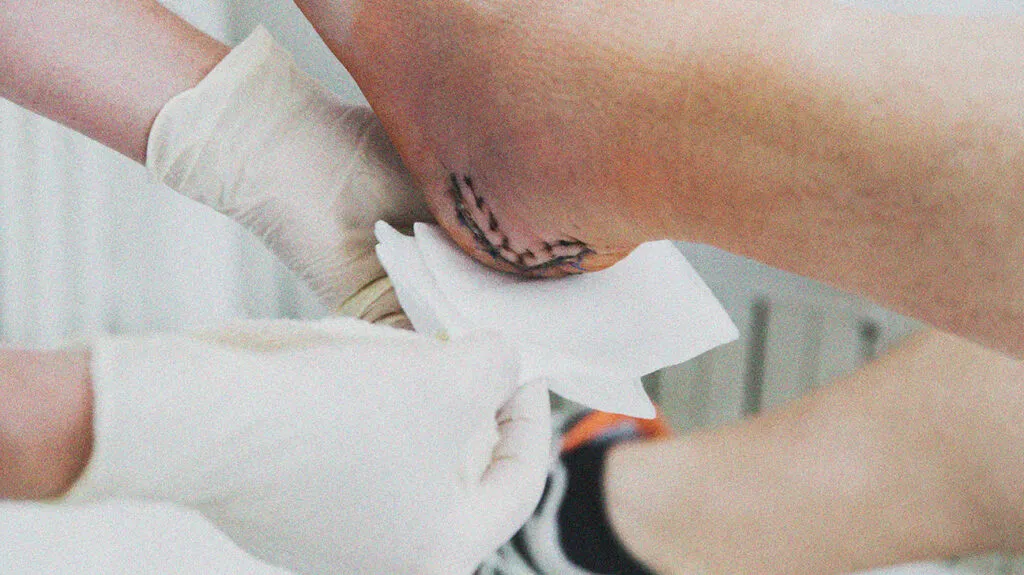Researchers develop injury-healing innovation that could transform treatment
Just as plumbers use solder to join metal pipes, scientists can now employ a similar technique called laser tissue soldering to repair wounds. For all the medical advances we have developed to heal ourselves, when it comes to cuts and wounds, the options are rather limited — a plaster for a minor cut and for […]

Just as plumbers use solder to join metal pipes, scientists can now employ a similar technique called laser tissue soldering to repair wounds.
For all the medical advances we have developed to heal ourselves, when it comes to cuts and wounds, the options are rather limited — a plaster for a minor cut and for anything deeper, adhesive strips, stitches or glue.
In theatre, surgeons have staples to close external wounds and inside bodies they have the option of sutures, cautery (burning tissue to close a wound) or applying a solution made of a protein — fibrin — which causes clotting.
However, these traditional methods can sometimes allow fluid to leak out to other structures within the body. This can cause infection and, in serious cases, septicaemia.
But now researchers have developed a wound-healing innovation that could transform their options: laser tissue soldering. In this technique, a laser heats a paste made of biocompatible material — albumin, a protein carried in the blood, and tiny particles of metal alloys such as titanium nitride, along with other substances.
When the laser light is applied to the paste, it creates a protective layer, binding tissue together and creating a watertight seal.
The nanoparticles inside the solder paste attract the light energy from the laser and confine it to where it is needed. The light generates heat, causing chemical bonding with the tissue it touches, which promotes healing.
Over time, the paste dissipates, removed by the body’s natural clearing processes. The scientists behind the new method, based at the Federal Institute of Technology in Zurich, say soldering offers a perfect seal.
Oscar Cipolato, a physicist leading the research, says: “In certain types of surgery, leakages are a problem. They increase the length of time people spend in hospital.
“If you are able to avoid these complications, patients can avoid a lot of pain and, possibly, even worse consequences such as death.”
He explains: “With soldering, you put a solder material on top which allows you to have a better and stronger attachment. This method works in the same way on tissue.
“We have found that it creates a better seal and it’s also easier for the tissue to later regenerate and close the wound.”
So far, the Zurich team, in collaboration with Empa, a Swiss materials science institute, has proved the technique works using a bovine albumin paste (extracted from cows) on ‘soldering’ pig tissue.
For decades, scientists have known about the potential of lasers to heal wounds, but the challenge has been to confine the light energy precisely.
Lasers emit a range of light with different wavelengths. If the wavelength is too frequent (or short), it can damage tissue by burning it. If it’s too slow (or long), it may not generate
The real innovation by the Zurich team has been to pinpoint the right formulation of paste with the laser — refining the technique so the paste responds to the laser light to generate sufficient heat to create a seal but not to burn surrounding tissue.
Commenting on the innovation, Peter Brennan, a consultant maxillofacial surgeon and honorary professor of surgery at Queen Alexandra Hospital in Portsmouth, says: “It seems like something from Star Trek — with nanoparticles and laser beams — but it is a very exciting concept, subject to proper research, clinical trials and evaluation to assess its value and safety for patients. However, in principle, it sounds like a great idea.”
Shirley Chan, an NHS consultant colorectal surgeon, says while the technique is a long way off being able to be used in humans, it could be a simple way to manage leaks.
“Currently, ends of the bowel are joined by sutures individually placed by hand or using specially designed staple guns,” she says.
“One of the most serious complications is the join leaking. This can lead to patients getting infections, sepsis and, potentially, needing to return to theatre.
“This new technique could become a straightforward way of ensuring a leak-proof join during an operation.”
– Mail Online
